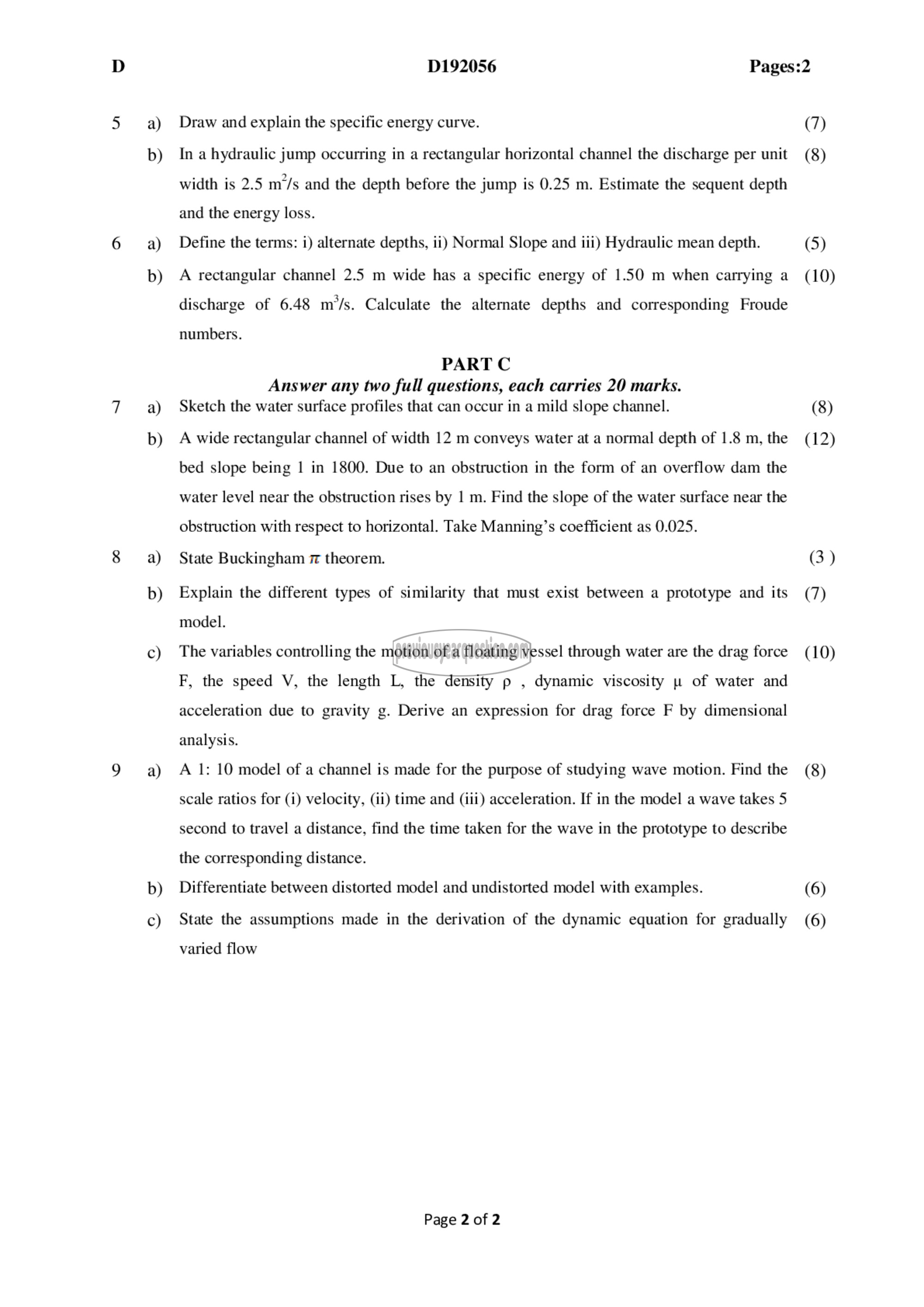APJ ABDUL KALAM TECHNOLOGICAL UNIVERSITY Previous Years Question Paper & Answer
Semester : SEMESTER 4
Subject : Fluid Mechanics- II
Year : 2019
Term : DECEMBER
Branch : CIVIL ENGINEERING
Scheme : 2015 Full Time
Course Code : CE 206
Page:2
a)
b)
a)
b)
a)
b)
a)
b)
0)
೩)
0)
௦)
1192056 Pages:2
Draw and explain the specific energy curve.
In a hydraulic jump occurring in a rectangular horizontal channel the discharge per unit
width is 2.5 m’/s and the depth before the jump is 0.25 m. Estimate the sequent depth
and the energy loss.
Define the terms: i) alternate depths, ii) Normal Slope and iii) Hydraulic mean depth.
A rectangular channel 2.5 m wide has a specific energy of 1.50 m when carrying a
discharge of 6.48 :اھ Calculate the alternate depths and corresponding Froude
numbers.
PART ட
Answer any two full questions, each carries 20 marks.
Sketch the water surface profiles that can occur in a mild slope channel.
A wide rectangular channel of width 12 m conveys water at a normal depth of 1.8 m, the
bed slope being 1 in 1800. Due to an obstruction in the form of an overflow dam the
water level near the obstruction rises by | m. Find the slope of the water surface near the
obstruction with respect to horizontal. Take Manning’s coefficient as 0.025.
State Buckingham 7 theorem.
Explain the different types of similarity that must exist between a prototype and its
model.
The variables controlling the motion of a floating vessel through water are the drag force
ए, the speed ,لا the length L, the density م , dynamic viscosity |॥ of water and
acceleration due to gravity g. Derive an expression for drag force F by dimensional
analysis.
A 1: 10 model of a channel is made for the purpose of studying wave motion. Find the
scale ratios for (i) velocity, (ii) time and (iii) acceleration. If in the model a wave takes 5
second to travel a distance, find the time taken for the wave in the prototype to describe
the corresponding distance.
Differentiate between distorted model and undistorted model with examples.
State the assumptions made in the derivation of the dynamic equation for gradually
varied flow
Page 2 of 2
(7)
(8)
(5)
(10)
(8)
(12)
(3)
(7)
(10)
(8)
(6)
(6)
